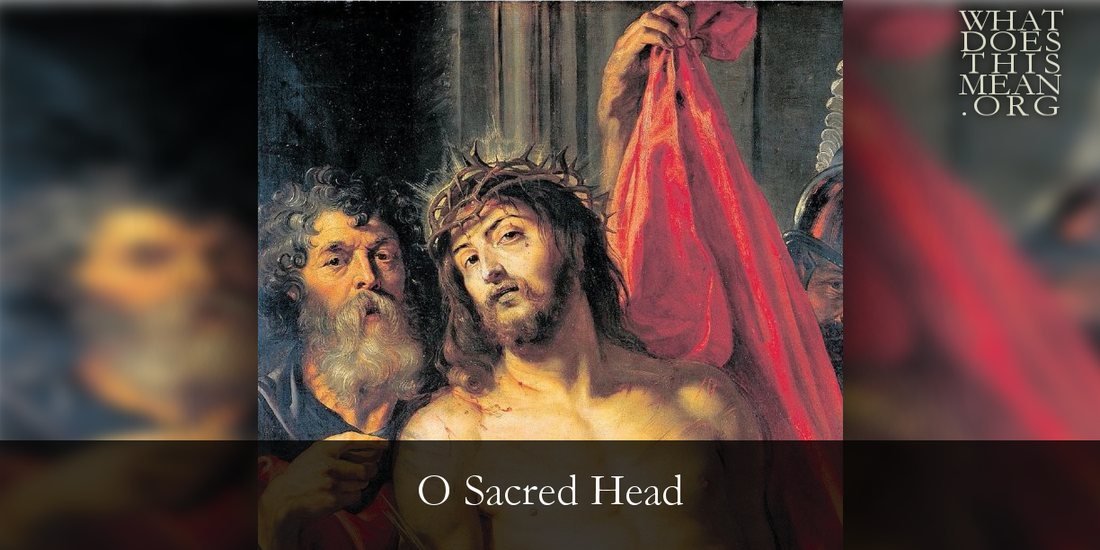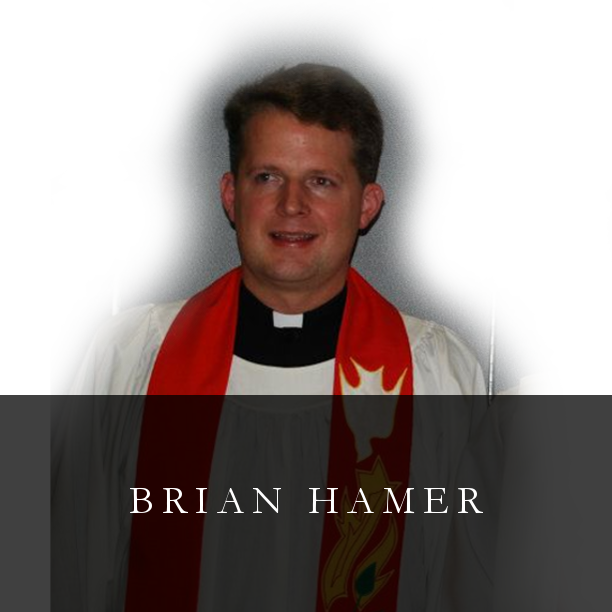The Lutheran organist and composer, Dietrich Buxtehude (1637/39-1707), set each of the seven poems to music in a series of seven short cantatas known collectively as “The Most Holy Limbs of Our Suffering Jesus,” and arguably the first full-scale Lutheran cantata series. Here is an excerpt from Buxtehude’s setting of the seventh series of poems (sung to his face in the introductory Psalm verse, and to His head in the first stanza of the poem proper), with obvious similarities to the hymn, “O Sacred Head”:
Beaten, wounded, Struck with a reed,Thy face spat upon.
The tune that we now know as “The Passion Chorale” was composed by Hans Leo Hassler (1564-1612) in a secular context and first appeared in 1601. Readers may be surprised to learn that the tune was originally a love ballad and sounded something like this:
I’m totally lost; my heart is sick and sore.
I get no rest by day or night, my pain is always so great.
I’m sighing and crying all the time; I’m almost in despair.
Both text and tune stand in stark contrast to the Lutheran use of this chorale. The text printed above is just a portion of the “country music song” in which the singer has lost his girl (and perhaps his truck and his dog?) and can only despair! Also notice that the tune has a lively rhythm, alternating short and long notes, similar to LSB 450, but at a faster tempo and a half-note pulse. Perhaps it is no surprise, then, that this tune is also the basis for “American Tune” by Paul Simon?
With this in mind, Lutherans can only rejoice that the tune was rescued from the dearth of pop music by such prominent poets and composers as Paul Gerhardt (1607-1676), Johann Crüger (1598-1662), and J. S. Bach (1685-1750). Paul Gerhardt wrote a somewhat free paraphrase and adaptation of the original seven poems, although only the last portion has come into popular use today. Gerhardt’s favored musician, Johann Crüger, simplified the melody (see the straight, quarter note rhythms in LSB 449) and first published this tandem of text and tune in 1656. The hymn is a model marriage of theology and music, as happily wedded as are the text and tune of chorales such as “Wake, Awake, for Night is Flying” and “How Lovely Shines the Morning Star.”
Perhaps the most popular and profound use of the Passion Chorale is in the St. Matthew Passion of J. S. Bach. The Lutheran Kantor used five stanzas of “O Sacred Head” in the St. Matthew Passion, strategically placed at different points as the drama of the Passion unfolded before the flock during Good Friday Vespers. Each presentation of the chorale is pitched just a little lower than the previous use, gradually following the Christ through suffering and death to the point of burial, which concludes the Passion narrative. Listen, for instance, to the following stanza (sung in German), sung just after the death of Christ, without instruments and with great solemnity:
Then let Thy presence cheer me, Forsake me nevermore!
When soul and body languish, O leave me not alone,
But take away mine anguish / By virtue of Thine own! (LSB 450.6)
In this hymn, the believer encounters the crucified One not in the abstract, but as Christ for me. Using the ten stanzas of TLH 172 as a reference, we sing that the sacred head of Christ is gory, beaten, and bloody, but it is a hidden and mysterious joy for the believer to claim Christ’s head by faith (stz. 1-3). Christ suffered not for Himself, but for me (st. 4), that He might receive me as His own sheep (st. 5), who will never leave the Good Shepherd, but abide in His flock forever (st. 6). God’s true glory is in the cross (st. 7), whose joy is beyond all telling (st. 8). And even in the hour of death, His presence cheers us (st. 9) and enfolds us in His own death (st. 10).
In short, “O Sacred Head, Now Wounded” is a perfect summary of our Lenten journey through Good Friday to the glories of Easter Sunday. It bids us not to take a detour around the cross, but rather to go through the cross to hear again the good news that Christ’s sacred head was crowned with thorns that we might be crowned with His righteousness, life, and salvation.



 RSS Feed
RSS Feed
